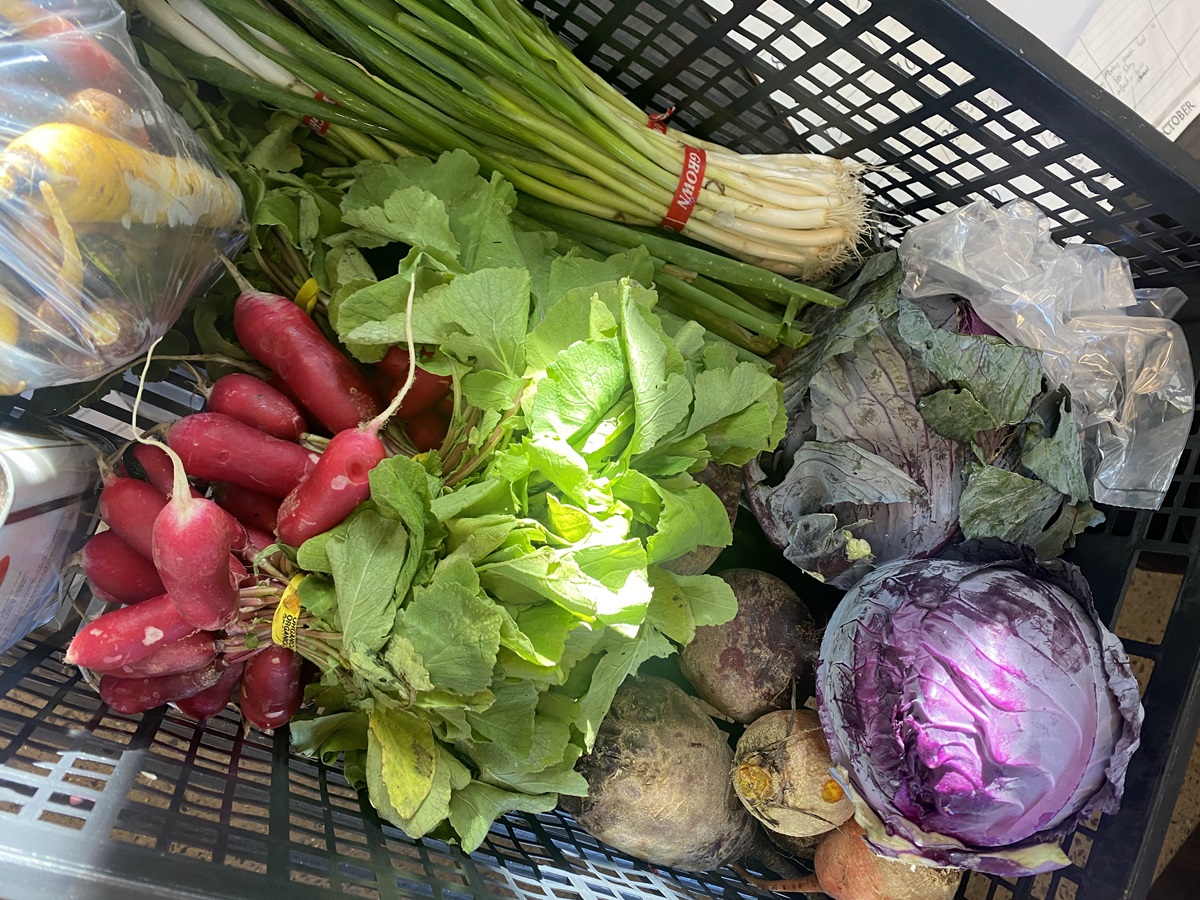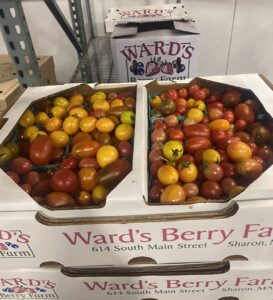Food Hubs: Redefining How Institutions Feed Students and Strengthen Regional Food Systems
- by Elise Dudley

Aggregating produce is just one thing food hubs do to build capacity for regional food systems.
Depending on the season, produce like multicolored heirloom tomatoes from Ward’s Berry Farm, vertically grown lettuces from Gotham Greens, boxes of shiitakes from RI Mushroom Co, or vibrant root vegetables fill the loading dock of Farm Fresh Rhode Island’s (FFRI) Market Mobile hub every Tuesday. Farmers deliver their goods according to what schools, restaurants, and institutions across the state ordered for the week ahead. Some of their crops will end up featured on dishes in fine dining restaurants, and others will find their way into home kitchens. The cosmetically imperfect (but still delicious) crops will end up in FFRI’s production kitchen — instead of the compost — to be transformed into shelf-stable products – a key value-add for farmers.
Bon Appétit is no stranger to the value and benefits of buying local food. As a chef-driven company, we first turned to local foods in 1999 in search of the most flavorful ingredients. Of course, the reasons we continue to champion local food have gone beyond the flavor that comes with shorter travel distance and seasonality. As a company whose chefs purchase more than $45M worth of local food annually, we know from experience that eating locally is not just delicious. Supporting local growers also helps to preserve farmland, build a resilient local economy, and encourages the sustainable practices associated with small-scale agriculture such as paying closer attention to biodiversity in both soil and the surrounding ecosystem.
Food Hubs Help Build Relationships – and Capacity
For many reasons, building trusting, durable relationships between farmers and chefs that are mutually beneficial can be tough. One primary sticking point is that chefs – in restaurants and institutions – need a certain amount of volume and consistency that small farms often struggle to provide. Chefs also can’t spare the time to sort through multiple ordering processes so that they can secure enough local produce to get them through a busy weekend. This piece of the puzzle is one that food hubs like FFRI seek to solve. 
On the rise across the country since the mid-2000’s, food hubs are one solution to common barriers to getting local food into restaurants and difficult-to-access institutional markets. With a keen focus on selling to anchor institutions (long-term fixtures in communities, such as universities, hospitals, and school systems, that play vital roles in the local economy), food hubs coordinate the aggregation, distribution, and marketing of locally and regionally produced foods from a network of responsible producers. Through aggregation, smaller farms work together to meet the high-volume demands of institutions who, in return, ensure stable and recurring purchases year-round.
For farmers, food hubs greatly lighten the burden of logistics and deliveries off farmers, while also granting farms entry into markets without necessitating individual certifications that can be costly and time-consuming. For Bon Appétit chefs and general managers, food hubs offer a streamlined and efficient way to procure seasonal, regional produce, accelerating their ability to meet and exceed local sourcing goals.
In our next post on the subject of food hubs, we delve into the stories of three outstanding ones, each linking local farms and producers with sustainably-minded institutions, chefs, and consumers.